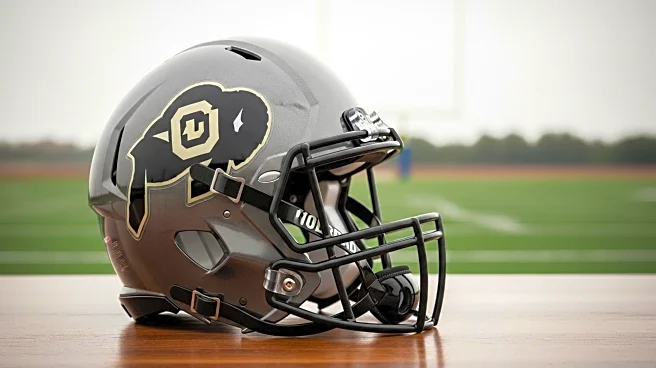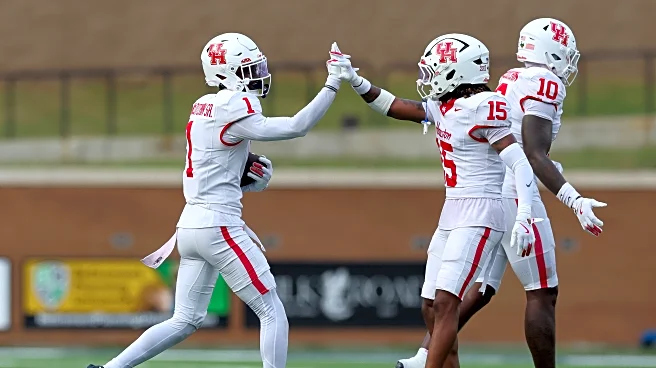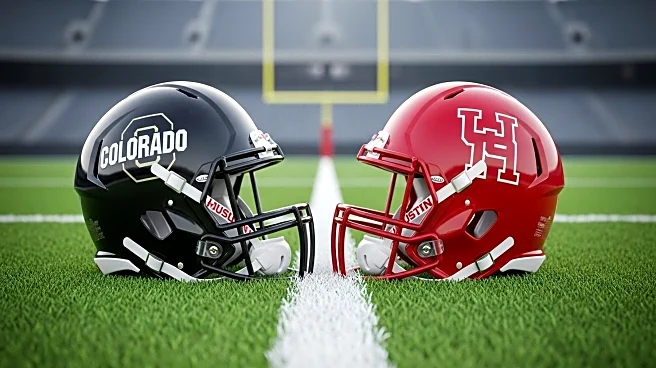What is the story about?
What's Happening?
The Colorado Buffaloes football team is experiencing a quarterback carousel as they prepare for their upcoming game against Houston. Coach Deion Sanders has decided to start Ryan Staub, who was previously third on the depth chart, over senior transfer Kaidon Salter and freshman Julian Lewis. This decision follows a loss to Georgia Tech and a subsequent victory against Delaware, where Staub impressed with his performance. Sanders, known for his offensive impatience, has frequently changed offensive coordinators and quarterbacks in his coaching career. The current situation reflects his commitment to a merit-based system, where performance dictates playing time.
Why It's Important?
The quarterback situation at Colorado highlights the challenges and dynamics of college football, where competition for starting positions is fierce. Sanders' decision to start Staub could impact team morale and the future of the other quarterbacks, particularly with the transfer portal offering players more mobility. This situation also underscores the pressure on college coaches to deliver results and the strategic decisions they must make to achieve success. The outcome of this quarterback competition could influence Colorado's performance this season and affect recruiting and player development strategies.
What's Next?
As Colorado prepares for their game against Houston, the performance of Ryan Staub will be closely watched. If he succeeds, he may solidify his position as the starting quarterback, potentially leading to further changes in the team's lineup. The other quarterbacks, Salter and Lewis, may consider their options, including transferring to other programs. Coach Sanders will continue to evaluate his team's performance and make adjustments as needed. The team's success or failure this season could have long-term implications for Sanders' coaching career and the program's reputation.
Beyond the Headlines
The quarterback carousel at Colorado reflects broader trends in college sports, where player mobility and competition are increasing. The use of the transfer portal has changed the landscape, allowing players to seek opportunities elsewhere if they are not satisfied with their current situation. This has implications for team dynamics, coaching strategies, and the overall competitiveness of college sports. The situation also raises questions about the balance between player development and immediate performance, as well as the role of coaches in managing these competing priorities.
AI Generated Content
Do you find this article useful?















